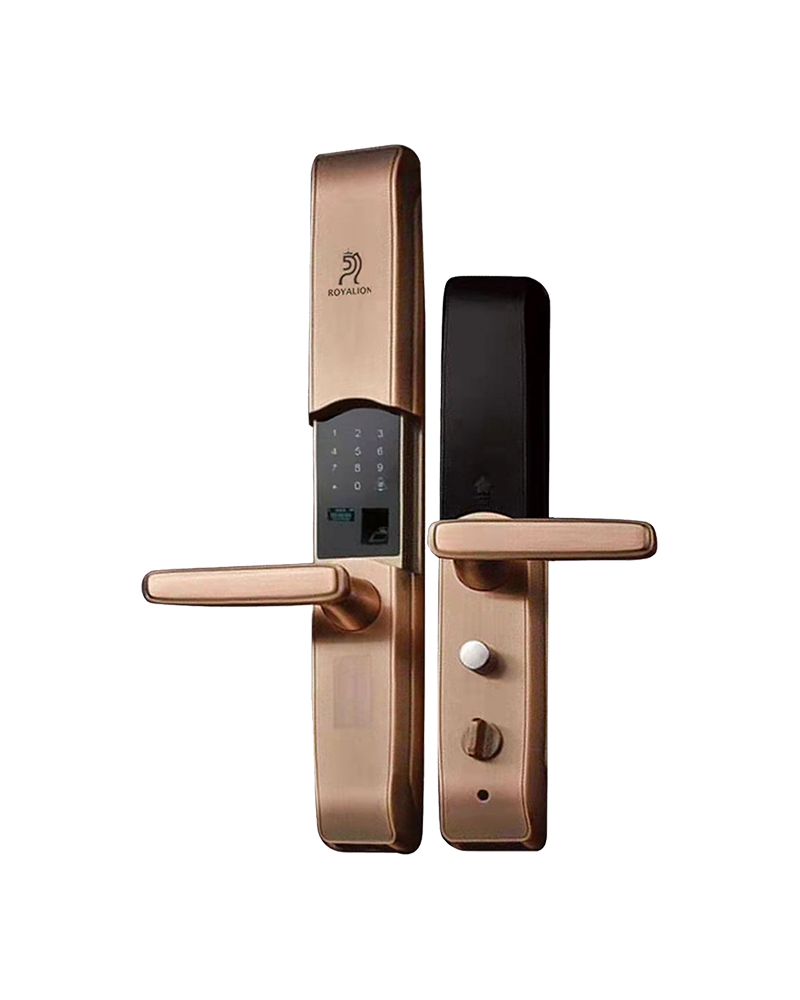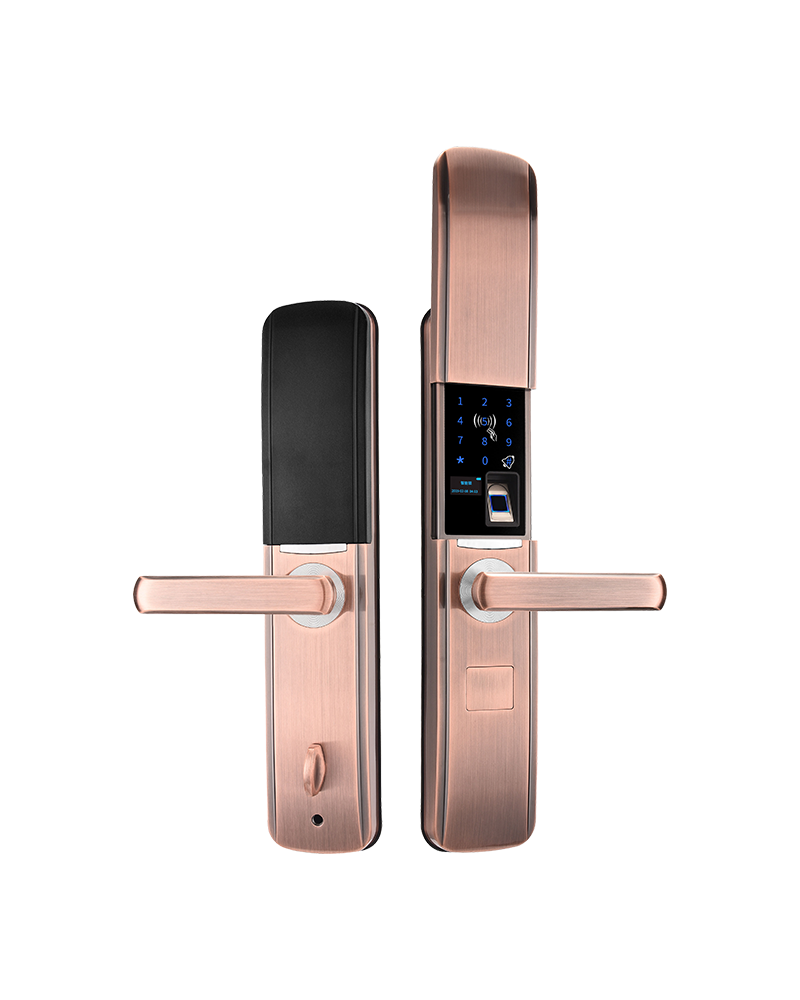Wholesale Visible intercom Small barbarian face recognition smart lock Company in China
In today's digital era, safety and convenience are the main needs of consumers for home security products. When designing and producing Face Recognition Smart Locks, manufacturers need to comprehensively consider technology, user experience, security and cost-effectiveness and many other aspects. The following is a detailed discussion on how to design and produce better facial recognition smart locks from a manufacturer's perspective.
What manufacturers need to focus on is the accuracy and speed of facial recognition technology. To achieve this, advanced biometric algorithms and high-resolution cameras can be used. These technologies ensure that the smart lock can quickly and accurately identify the user's facial features even under different lighting conditions. Additionally, manufacturers should consider using 3D facial recognition technology to improve defenses against photo, video or other non-living attacks.
User experience is another key factor, and manufacturers should design facial recognition smart locks that are easy to install and use. This includes a simplified setup process, intuitive user interface and clear voice prompts. At the same time, smart locks should be able to seamlessly integrate with users’ smartphones or other smart home devices to provide remote monitoring and control functions.
Security is a factor that users consider when choosing smart locks. Manufacturers must ensure that facial recognition smart locks have physical security features such as anti-prying, anti-drilling, and anti-electromagnetic attacks. In addition, the way smart lock data is encrypted and stored should also meet the high security standards to prevent any form of unauthorized access.
Cost-effectiveness is also an important factor that manufacturers need to consider when designing facial recognition smart locks. Although high-end security features and advanced technology may increase costs, manufacturers need to find the right balance to ensure that the product is both competitive and Can meet the needs of different markets. This may involve adopting a modular design that allows users to choose different features and capabilities based on their needs.
During the production process, manufacturers need to ensure quality control of facial recognition smart locks, which includes rigorous testing of each component and comprehensive inspection of the final product. In addition, manufacturers should also establish an effective after-sales service system to solve any problems that users may encounter during use.
To remain competitive in the market, manufacturers should also focus on innovation in facial recognition smart locks, which may include developing new user authentication methods, integrating more smart home features, or improving the energy efficiency of smart locks. Through continuous technological innovation, manufacturers can ensure that their products are always at the forefront of the industry.
Environmental factors also need to be considered when designing facial recognition smart locks. Smart locks should be able to work stably in various climate conditions, including harsh temperature, humidity and weather conditions. Manufacturers can improve the weather resistance of smart locks by using durable materials and sealed designs.
Manufacturers should also consider regulatory compliance and standardization when designing and producing facial recognition smart locks, which means that smart locks must comply with relevant security standards and regulatory requirements, such as ISO standards or country-specific industry standards. By adhering to these standards, manufacturers can guarantee the acceptability and legality of their products in global markets.
Designing and producing better quality facial recognition smart locks is a complex process that involves multiple considerations. Manufacturers need to consider technology, user experience, security, cost-effectiveness, quality control, innovation, environmental adaptability and regulatory compliance. Comprehensive balance in aspects such as sex. By continuously optimizing these aspects, manufacturers can produce facial recognition smart locks that are both safe and convenient to meet the needs of modern consumers.

 English
English Español
Español



